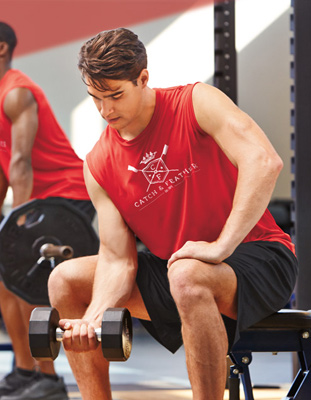For those of us suffering through the cold of winter, time seems to slow down, and it’s easy to go into hibernation mode. We crave hot, hearty and often unhealthy foods, and after that grueling winter erg workout and circuit, it’s oh-so-tempting to demolish an entire cheesy pizza. Yum.
However, it’s vital to keep our bodies properly fueled during the indoor season! The work you put in during the off months can make or break your spring, and it’s our ongoing job to make sure we’ve prepared properly for every workout.
Here are three super foods that allow us to fuel up before and after training.
Bananas
Potassium, potassium, potassium. Bananas are full of this mineral, which is fantastic for the heart. Potassium also is essential for the body to retain fluids, so it will prevent dehydrated while exercising(1). Bananas are also a great source of carbohydrates, which the body needs before and after a workout. Blended in a smoothie, or just as it is, the banana will prepare you for the worst erg.
Avocados
The king of guacamole, the avocado is the perfect recovery food. Although it’s high in fat, this is good-for-you fat! It helps the body metabolize fat soluble vitamins, which are crucial for the health of metabolic pathways(2). Adding avocado to your next meal will also help you metabolize all carbs or proteins eaten, and replenish your body(3).
Chocolate Milk
While it may seem like an indulgence, chocolate milk is an excellent after-workout recovery food. It’s packed with healthy fats, calcium and whey protein, which helps build muscle. It also restores muscle glycogen and hydrates the body, so you can throw away the sports drink(3). This delicious treat should be saved for after a workout, or you’ll risk building up too much lactic acid in your muscles beforehand.
With these three, easily accessible foods, you should be prepared for any circuit or 2k that comes your way!
SOURCES
3Details, The Editors of. 2015. “The 7 Best Things to Eat and Drink After Your Workout.” GQ. April 13. http://www.gq.com/story/what-to-eat-after-workout.
2ROCKLOCKRIDGE. 2010. “Why You Need A Multivitamin To Achieve Your Health And Fitness Goals!” Bodybuilding.com. June 9. http://www.bodybuilding.com/fun/why-you-need-multivitamin-achieve-health-fitness-goals.htm.
1Swain, Phil. 2013. “9 Amazing Reasons to Eat Bananas.” Fitness and Health Advisor. May 22. http://FitnessandHealthAdvisor.com/9-amazing-reasons-to-eat-bananas/.


